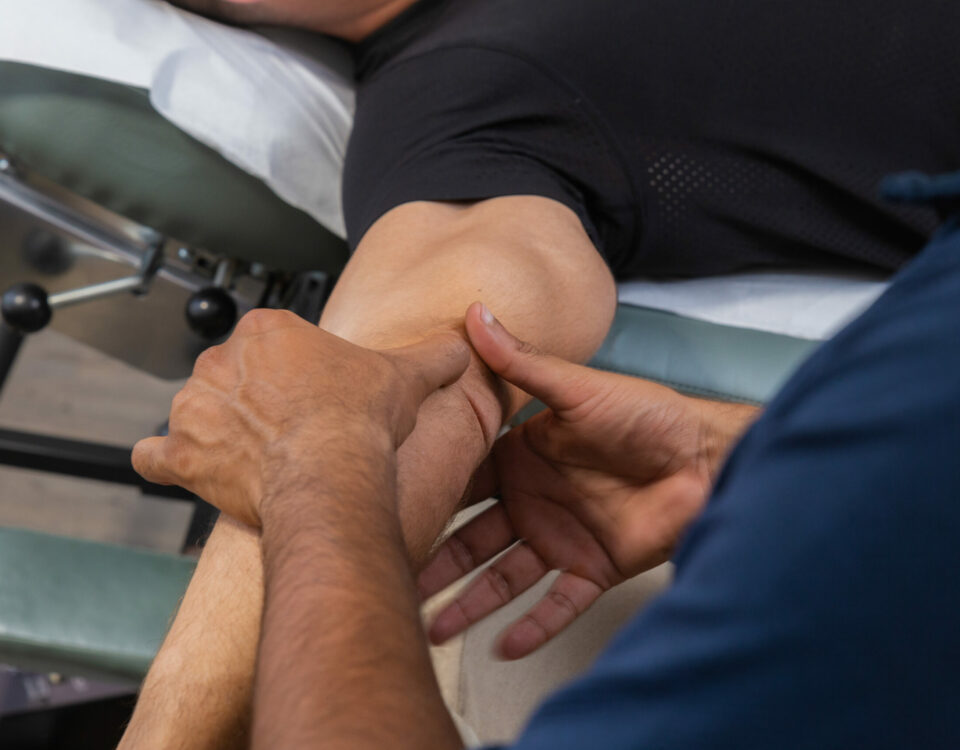
Office Ergonomics
April 19, 2022
Chiropractic care beyond the cracks
June 1, 2023Did you know different cultures treat pain differently? Some languages have different words for pain and some have only one.
WHY?
At its foundation pain is a sensory experience that indicates the presence of threat or potential harm.
Pain sensation is transmitted from the tissues along our nerves to our central nervous system where the threat is evaluated and reaction is determined.
When we think of pain it is important to understand that there are two different components of pain:
- Pain Sensation: Occurs in the tissue. Your tissue experiences something that is causing or could cause harm and it notifies the brain.
- Pain Interpretation: Occurs primarily in the brain. This can vary depending on a range of different factors.
- Have you ever been in a situation where you’ve injured yourself but not noticed at the time?
- Maybe you were playing a sport and needed to win or maybe you fell over in public and were super embarrassed!
- Both of these circumstances cause a rush of adrenalin that acts as a powerful pain reliever!
Because these two components of pain and injury are not always related, it is possible (and can be relatively common) to have one without the other! Roughly speaking in healthy non-injured tissue we all have the same base level of pain sensation. Meaning if I put all of our hands in water that was hot enough to burn it we would all have a sensation of pain.
However, we can have very different interpretations of pain. Using the hot water example above. If you really trusted me and I burnt you, there could be an emotional, mental, and physical reaction to the event.
In both cases, the sensation of pain was sent to the brain but the interpretation of pain varied.
ADDITIONAL PAIN INTERPRETATION ELEMENTS:
Adrenaline helps your brain block pain sensations when it has other more important things to deal with. Usually when our life is in danger but also sometimes when we are trying to protect our social image too. In these cases, our brain perceives pain as disproportionately lower than tissue injury.
Once we calm down and our brain is able to assess the injury then our pain returns.
The opposite can happen too.
If you have ever sat through a boring or especially stressful meeting then you may have noticed that pain in your back or in your knee gets worse and worse. To the point where you feel you need to move or leave, your injury didn’t get worse because your boss was in a bad mood but your perception of pain did.
Stress has the opposite effect of adrenaline. When we have an injury, pain acts to protect us from making it worse, it encourages us to avoid things that are stressful so that we don’t put ourselves in a dangerous situation.
STRESS AND WELL-BEING
Stressors ranging from relationships, family, financial strain, or fear of the unknown can all contribute to mental and physical well-being.
This is mainly because our bodies’ stress response hasn’t evolved much from when we were hunting and gathering food and dealing with actual physical threats (from wild animals to unpredictable weather). You can explore more about why stress exists here.
Although society is much different than primitive times, our hardwiring doesn’t recognize that our work-related stress is not the same as the life-or-death situations we used to face. So this stress is a signal to our body to react in various ways that can include raising our cortisol levels (the stress hormone), increasing our heart rate (which can mimic an anxious feeling), and increasing overall tension in the body.
HOW TO DECREASE STRESS AND HELP MINIMIZE PAIN
- Move throughout the day: When we sit for long periods our body is physiologically stressed because of lower oxygen levels and reduced blood being pumped through the muscles. If we are stressed we tend to contract our muscles so we are ready to fight or run. This constant contraction becomes interpreted as pain!Moving more will help improve blood flow and give your body and your mind a much-needed break!
- Find ways to stay active within reason if injured:
When we have an injury often our pain can be exacerbated by the uncertainty or stress that comes with it.When your knee pain is stopping you from playing your favorite sport then it’s going to feel like the enemy! The injury becomes the focus for the reason you can’t do what you love anymore.Find ways to discuss options with your clinician.
This is a very brief introduction to understanding pain. When experiencing pain it is important to understand that interpretation and sensation differ depending on our mental and emotional state including our stress levels and our ability to continue doing the things we love.
Talk more with your clinician about how pain works in relation to your injury so you can get pain-free faster. Our goal is always to help you get back to the activities that bring you joy as soon as possible.





